HQ: Basking Ridge,New Jersey
hello@emotionalpictures.com
Receive updates on news, events & deals.
Woman-Owned. Jersey Proud.
content for every screen
Categories/Search+
Hydrangeas: My Top Five Tips For Getting Beautiful Blooms
September 9, 2024
Do you suffer from hydrangea envy? Have you tried growing hydrangeas but only end up with leaves and no blooms?
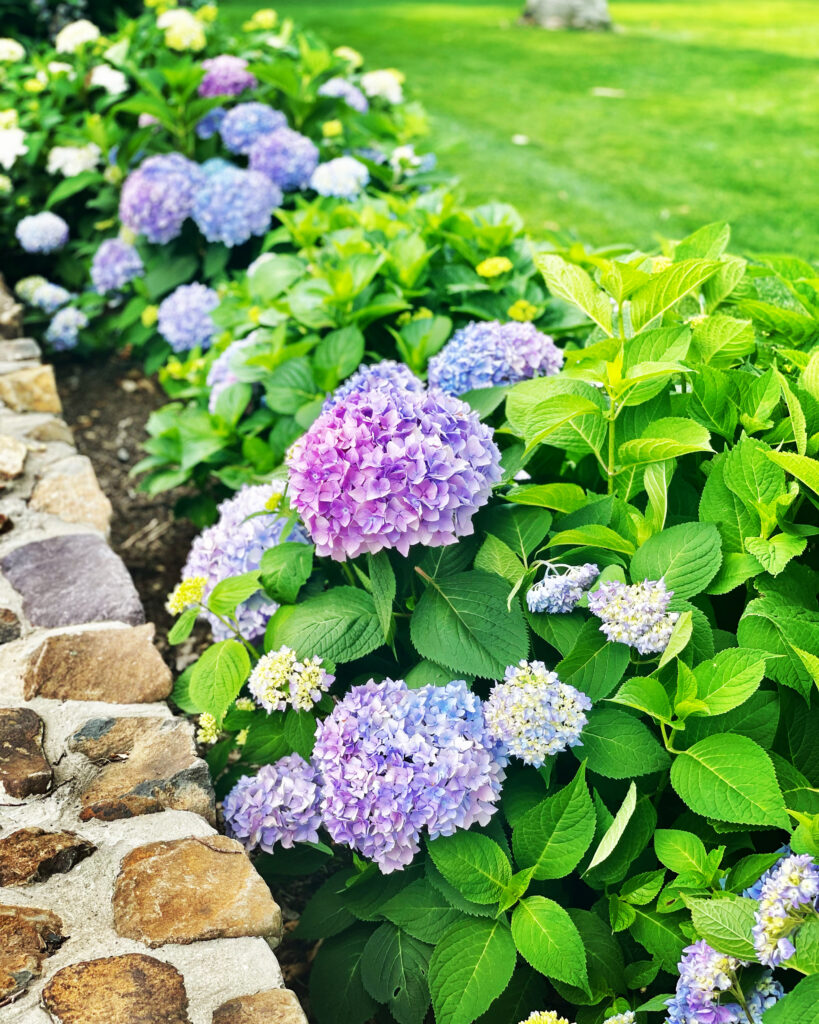
I am a hydrangea freak and they are my most FAVORITE PLANTS to grow – everywhere. In fact, I currently have 49 hydrangeas growing at the Manse. The big reason I love them so much? Their flowers last the whole season. Hang to the end for links to everything mentioned here in the post!
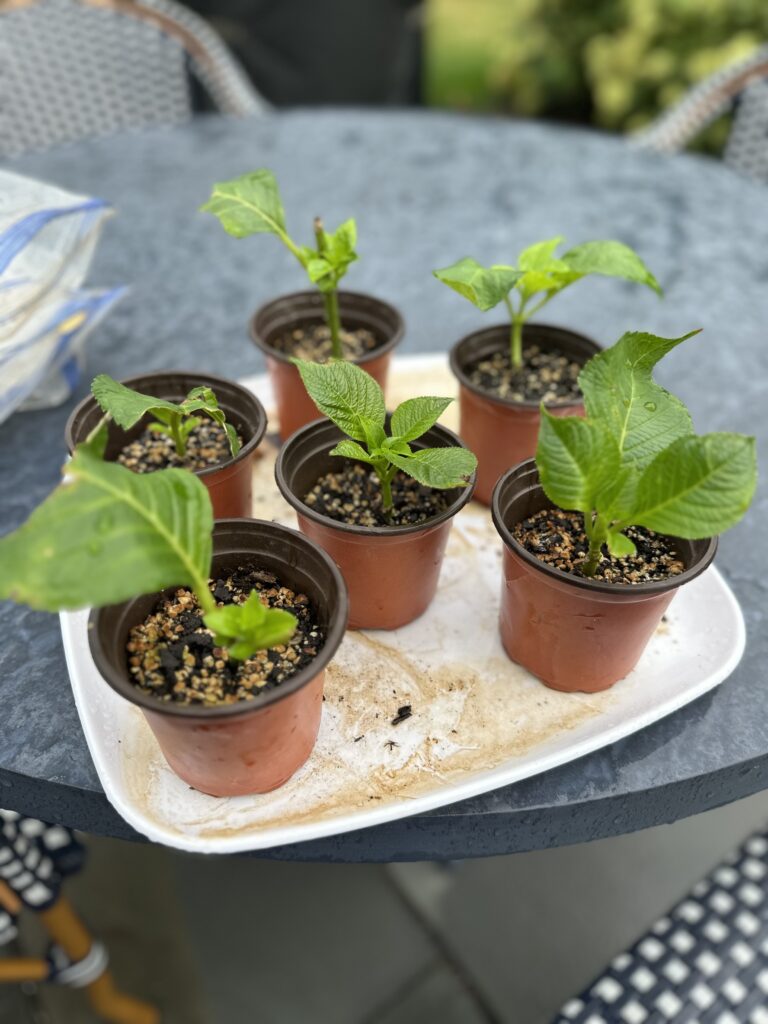
If you’ve tried your hand at growing these beauties but are falling short, stay tuned for my top 5 tips on how to get those beautiful balls popping in your garden. First things first: There are FIVE main types of hydrangeas, and some require different care and have varying bloom times.
Hydrangea Macrophylla “Mophead”
These hydrangeas are the colorful ones. They deliver pinks and blues (more on how to get the color you want later). There are several varieties, but in recent years, new cultivars solve an old problem: The older types typically bloom on old wood (meaning stems from the previous season). With harsh winters or a late frost, flower buds can die, which means, no flowers.

The newer cultivars like ENDLESS SUMMER, bloom on old and new wood, so even if the buds on the old wood get frozen out, you will still get blooms.
Without pruning, most mopheads can get as high as 8 feet and as wide as 6 feet, but most of mine are kept about 4′ high and wide once they reach maturity.
Bloom Time: Late Spring.
Hydrangea Paniculata “Panicled Hydrangea”

These hydrangeas are the hardiest of any I’ve grown. They bloom on new wood, withstand harsher winters, and always deliver big beautiful blooms. There are a few cultivars in this category, the most common being ‘LIMELIGHT.’
I also love the Vanilla Strawberry variety which, true to its name has pink and white blooms. Most paniculatas start as white/greenish white blooms, turning a light pink or beige toward end of summer into fall. The bloom shape is more conical than round.
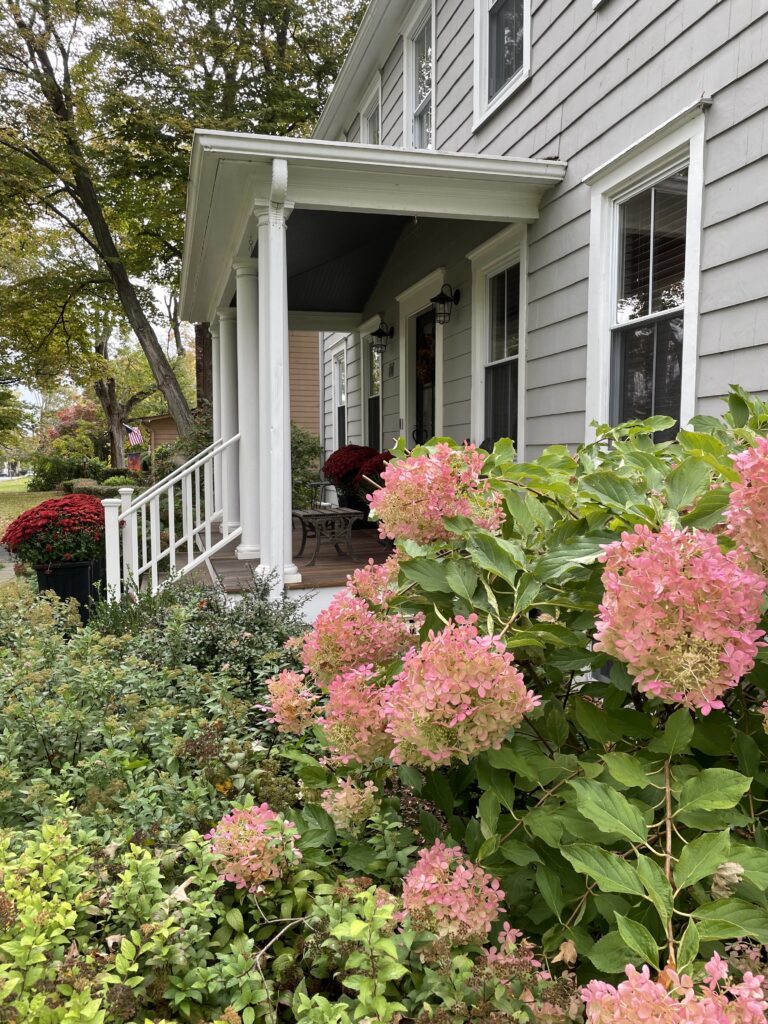
Because they are so sturdy, paniculatas can get very high and wide. Some choose to create a limelight “tree” with a single trunk. I prefer them full, and simply neaten them up every so often. They also make a fantastic hedge.
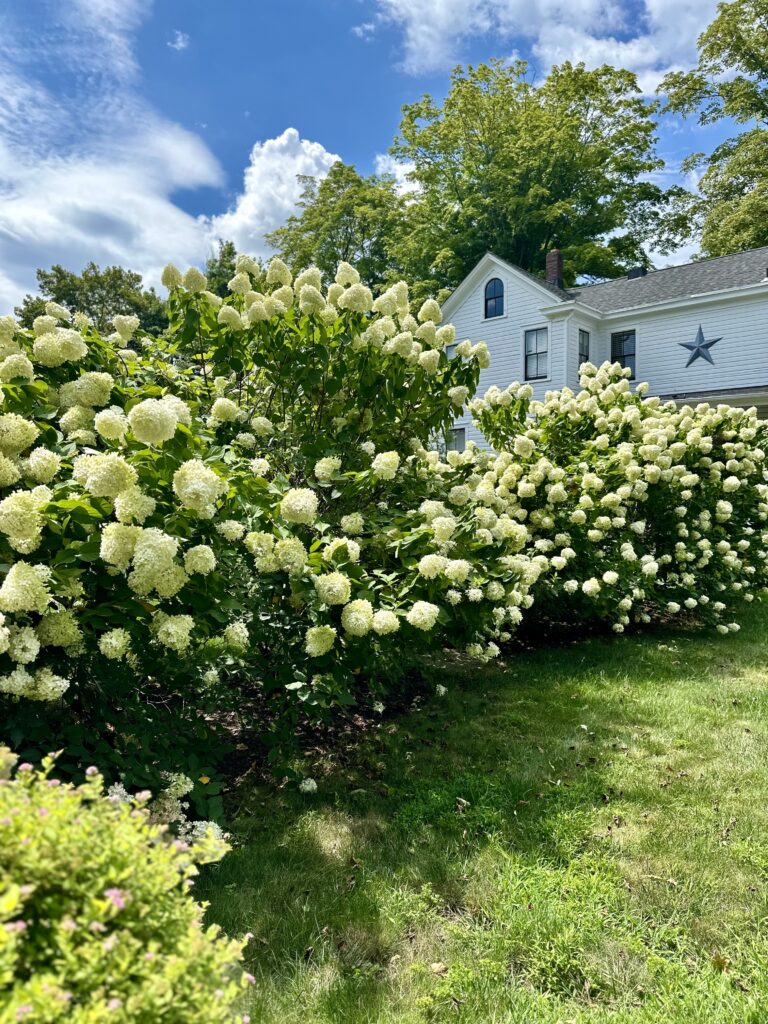
Bloom Time: Mid to Late Summer
Hydrangea Arborescens “Smooth Hydrangea”
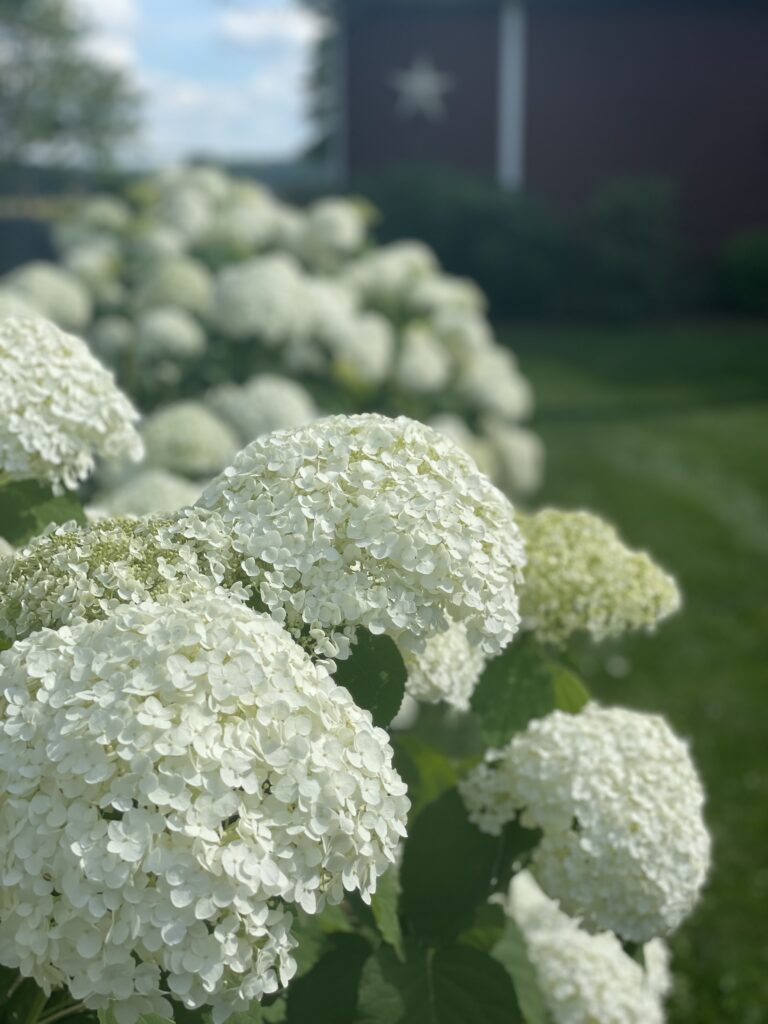
Like panicled hydrangeas, these have large white blooms, but are more round in shape, like the mopheads. The advantage over paniculata is these bloom earlier (late spring versus mid-summer). The most popular cultivar is “Annabelle”. The downside to Annabelle is it can be very floppy when the blooms get large and the stems aren’t yet very woody. This issue has been addressed somewhat with a new version called “INCREDIBALL.” The blooms on these are HUGE, like Dolly Parton huge (no offense Dolly). Because they bloom on new wood, you get tons of flowers even after a tough winter.
Bloom Time: Late Spring
Hydrangea Quercifolia “Oakleaf”
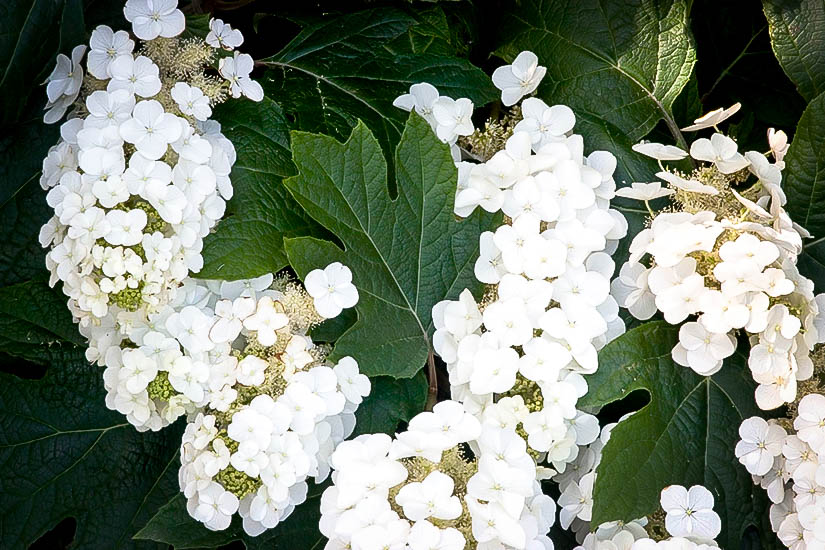
Oakleaf hydrangeas have very different leaves, hence the name. This is one of the few hydrangeas native to the US. Oakleaf has a conical bloom and the leaves go red in the fall which adds a pop of color as the garden fades. These perform about the same as paniculatas in size and hardiness.
Bloom Time: Late Spring/Early Summer
Hydrangea Anomala Petiolaris “Climbing Hydrangea”
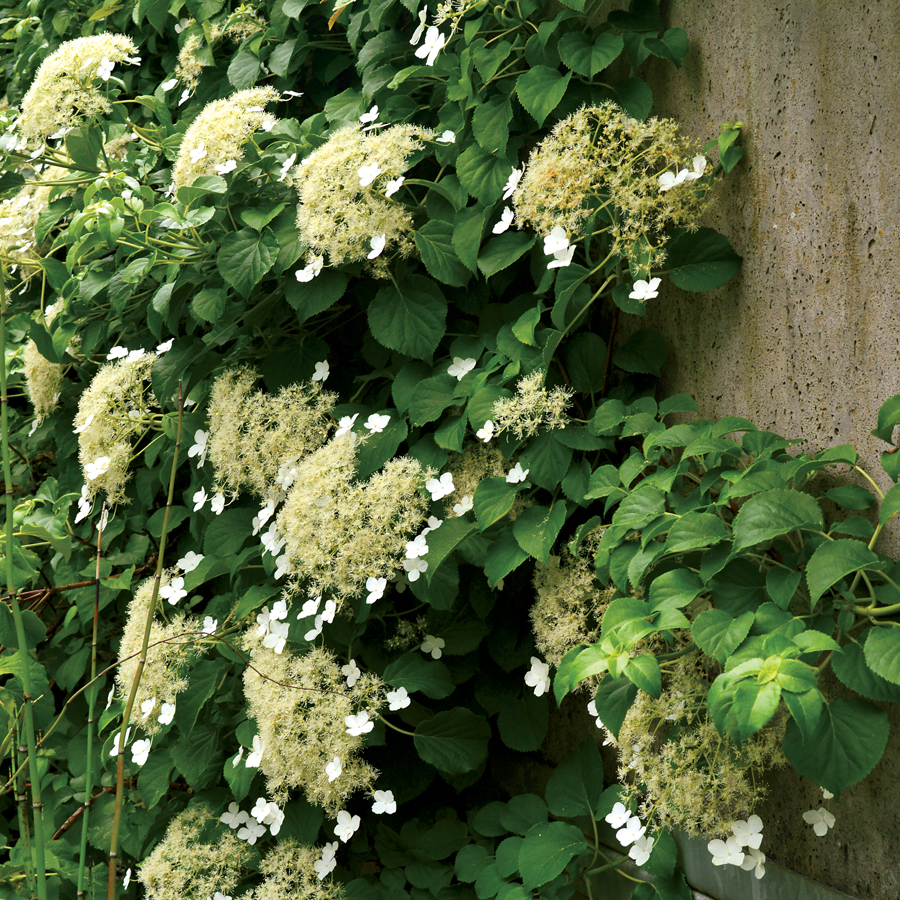
I had climbing hydrangeas in my previous home. They grow slowly until established, then become more vigorous. The downside is they often take a couple of years before they begin blooming. They also need a very sturdy structure on which to grow. We used a metal mesh, heavy duty chicken wire, and that worked well. These tend to be more shade tolerant, and have smaller blooms.
Bloom Time: Late Spring/Early Summer (once established)
How To Insure Beautiful Blooms: My Top 5
1. Choose The Ideal Location.
Mopheads do best in light shade where they get morning sun. If you plant in full sun, be prepared to water a LOT on hot dry days.
The word hydrangea comes from the Greek “hydor,” meaning water, and “angos,” meaning jar or vessel. This roughly translates to “water barrel.” They LOVE water.
Some wilting is normal during a hot spell, and typically they will perk up in the evening. If they don’t, get out the hose!
Mulching with cedar or a rich compost blend will help keep moisture in. When watering, the ideal method is to use soaker hoses or drip irrigation. Sometimes the leaves can get brown spots if they get too wet too often.
Other hydrangeas like paniculatas (Limelight), Oakleaf or Smooth hydrangeas, are fine with more sun and are a bit more drought tolerant.
Most hydrangeas hold up well to wind, however winter winds can toast the flower buds on mopheads. If you live in an area that gets cold temps, you can winterize your mopheads by adding a layer of mulch or chopped leaves in and around the plant, creating a mound that can be caged in with chicken wire. In colder regions, it’s not a bad idea to plant mopheads closer to the house or in a more sheltered area.
I must also raise an issue that affects location which is a four letter word: DEER!
Hydrangeas are not deer-resistant. While not every herd eats the same plants, hydrangeas are by and large big tasty snacks for deer.
If you have deer in your area and you don’t have a fence, you can experiment with one plant near the house. The female of the herd dictates what the herd will eat, and who knows, maybe she’s just not into it. You’ll test it, and go from there. The other solution? Get a dog! When we moved out to the country, the deer mowed down some potted hydrangeas I had put on the property before we moved in. Once our doggy took residence (we have an invisible fence), the herd eventually moved on, and now I have almost 50 on the property and not one nibble.
2. Know When To Prune!
Never EVER EVER EVER prune mopheads after August 1.
Why? Because this is when they start making their flower buds for the following year. The best time to prune is in July after they have flowered. It’s best not to prune at all in the first two years after planting.
Paniculata & Oakleaf
Because these bloom on new wood, you can prune in the fall or wait until spring when the leaves are off and you can see the shape of the plant. Take out any “puny” or twisted stems. To encourage fullness at the bottom, prune some stems way down, leaving about ⅓ of the stem.
Smooth Hydrangea (Annabelle or IncrediBall)
Prune late winter/early spring and remove at least ⅓ of the top of the plant to encourage thicker stems and bigger blooms. We have a row of them near our patio and we take the hedge trimmer and sheer off the tops.
Climbing Hydrangea
Prune in late summer after blooming.
3. Take Them On An Acid Trip.
Hydrangeas LOVE acid (AKA a lower pH). I prefer using HOLLYTONE, which is an organic fertilizer for acid-loving plants. At my house, we also dump the coffee grounds around the plants. The ONLY exception to this rule is if you prefer pink mopheads. In order to achieve the pink, the soil must be alkaline.
To turn hydrangeas blue, they not only need acidic soil, they specifically need aluminum sulfate. Just put a few tablespoons in a bucket of water and pour around the base of the plant. I actually like when they’re transitioning and bloom in both colors!
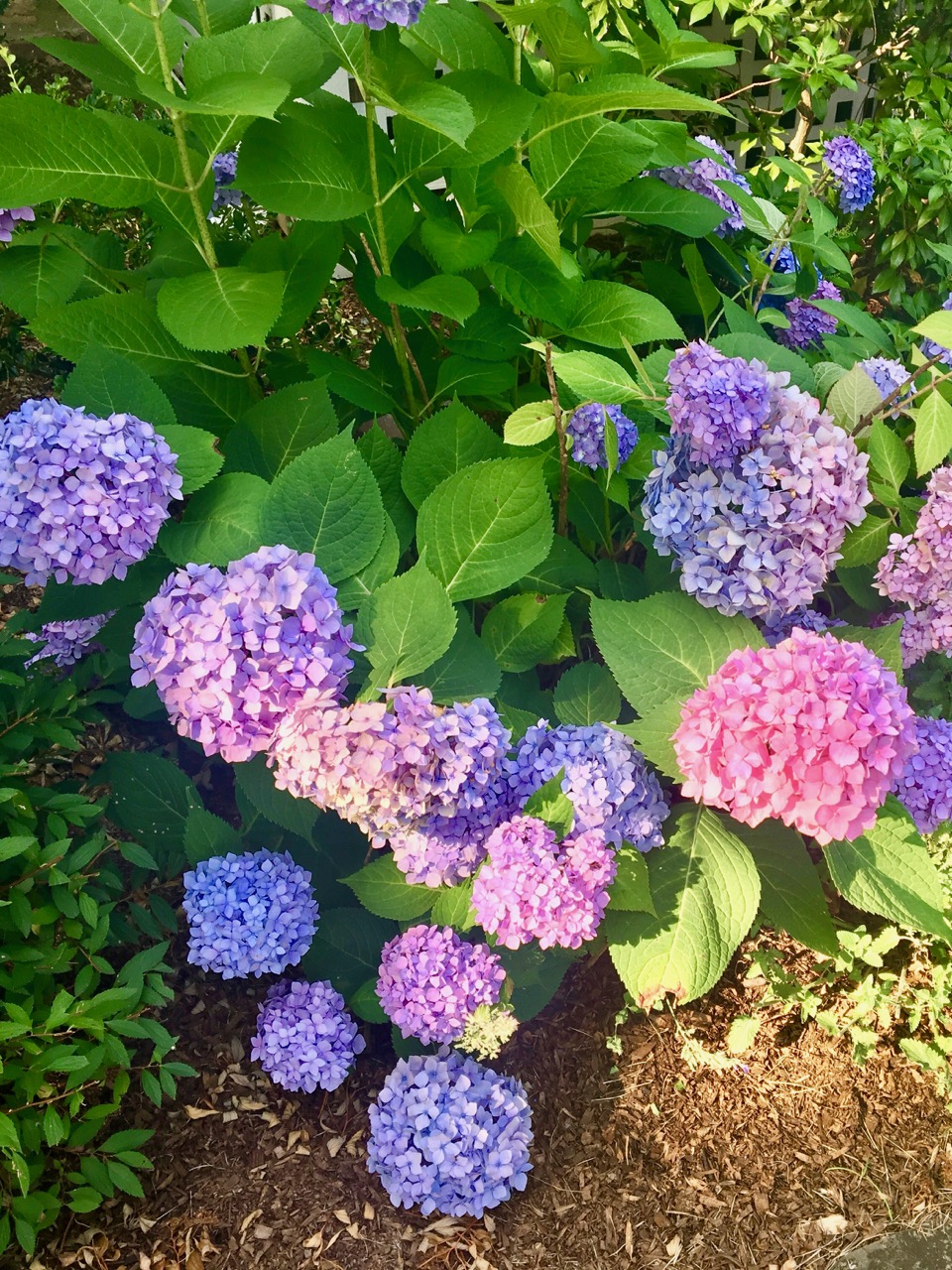
To turn hydrangeas pink, add a few cups of lime around the base of the plant and lightly work it into the soil. This will raise the pH over time and voila! Pink.
The various shades of white hydrangeas are not affected by pH, but I recommend you go with more acidic fertilizers and amendments in general. I’m also a fan of a little OSMOCOTE to help encourage more blooming. I apply this in the Spring.
4. Know What You Are Buying.

Every Mother’s Day, those foil-wrapped mophead hydrangeas pop up everywhere. Yes, they are beautiful, but odds are when you plant them outside, you probably won’t see them bloom again! Here’s why: These hydrangeas are grown in a hot house environment and engineered with all sorts of fertilizers to force fast growth and bloom, often at the expense of their future growth. Even if you’re in a mophead friendly hardiness zone, I have yet to see one of these foil-wrapped beauties do well. Note that growing hydrangeas indoors typically won’t deliver flowers. Plus, most hydrangeas need a dormant (cool) period to reset.
Your best bet is to buy from a reputable nursery. It’s important to know which cultivar you are purchasing, so don’t just settle for a generic tag on the plant. There are dozens of cultivars. Nikko Blue, for instance, is an old mophead. I have one currently. While it looks like its newer cousin ENDLESS SUMMER, they are very different on the bloom front. My Nikko is only showing a couple of blooms this year. If you don’t want to have to worry about winter killing your buds, consider the hardier varieties, either panicled or smooth hydrangea. Their white flowers are just as gorgeous in my opinion.
5. Know Your Zone.
Some mopheads don’t do well in colder winter zones, so it’s important to know your exact zone and then check whether a particular cultivar will fare well. If your zone is between 1-5, you may have a tougher time getting your mopheads to bloom unless they are one of the newer cultivars that bloom on new wood. The USDA has revised the zone map to reflect climate change. For instance, my zone used to be zone 6a and is now 7a since average temp has risen +4 degrees over the past decade. Check your growing zone here.
Hydrangea Issues
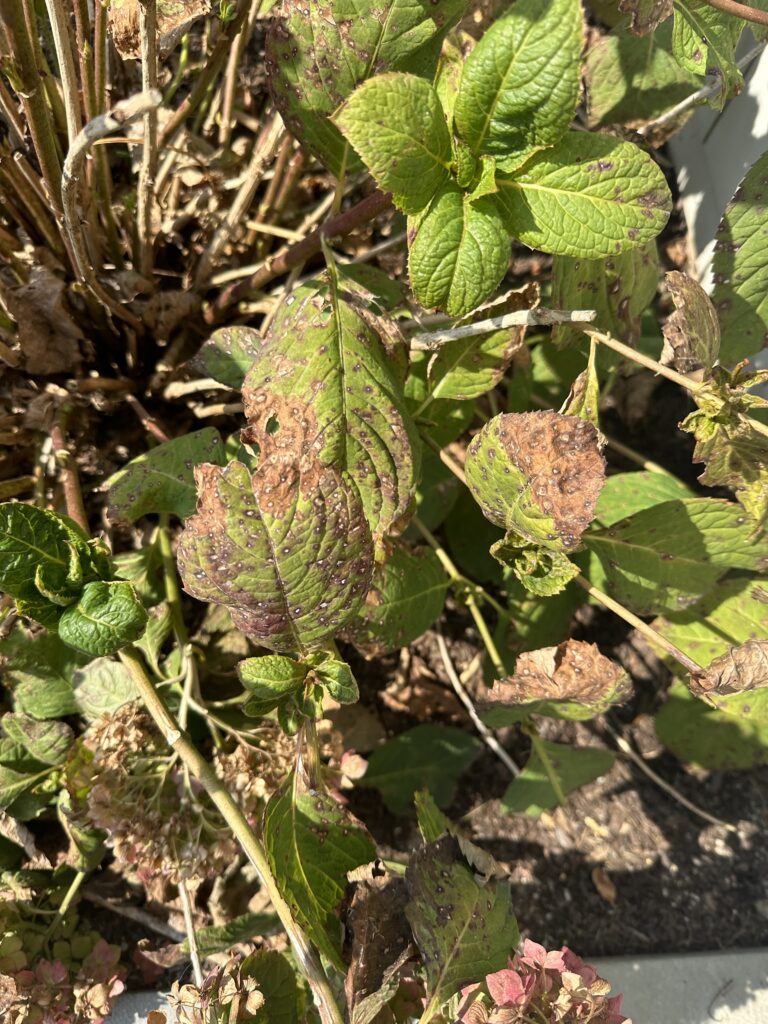
For the most part, hydrangeas are relatively maintenance free with the exception of watering often and properly (water at the base only). Occasionally, especially during hot humid summers, you might see dark spots or darkened leaves. This can also occur with heavy rainfall or if the plant is too crowded and isn’t getting enough circulating air. The two diseases responsible are:
Anthracnose (pronounced AN-THRAK-NOES)
Cercospora Leaf Spot (pronounced CIRCUS-SPORA)
To treat either, I use an organic fungicide called Captain Jack Copper Fungicide. This year some of my hydrangeas got hit pretty hard. So, I bought a rechargeable electric sprayer that made treatment a breeze. I recently had spine surgery, so constantly pumping a manual sprayer wasn’t an option. The good news is these sprayers are relatively cheap, so you can get a couple to keep necessary solutions on hand. The copper fungicide won’t remove the existing spots, but will prevent further infection. It’s also important to avoid watering from above. Always water at the base of the plants.
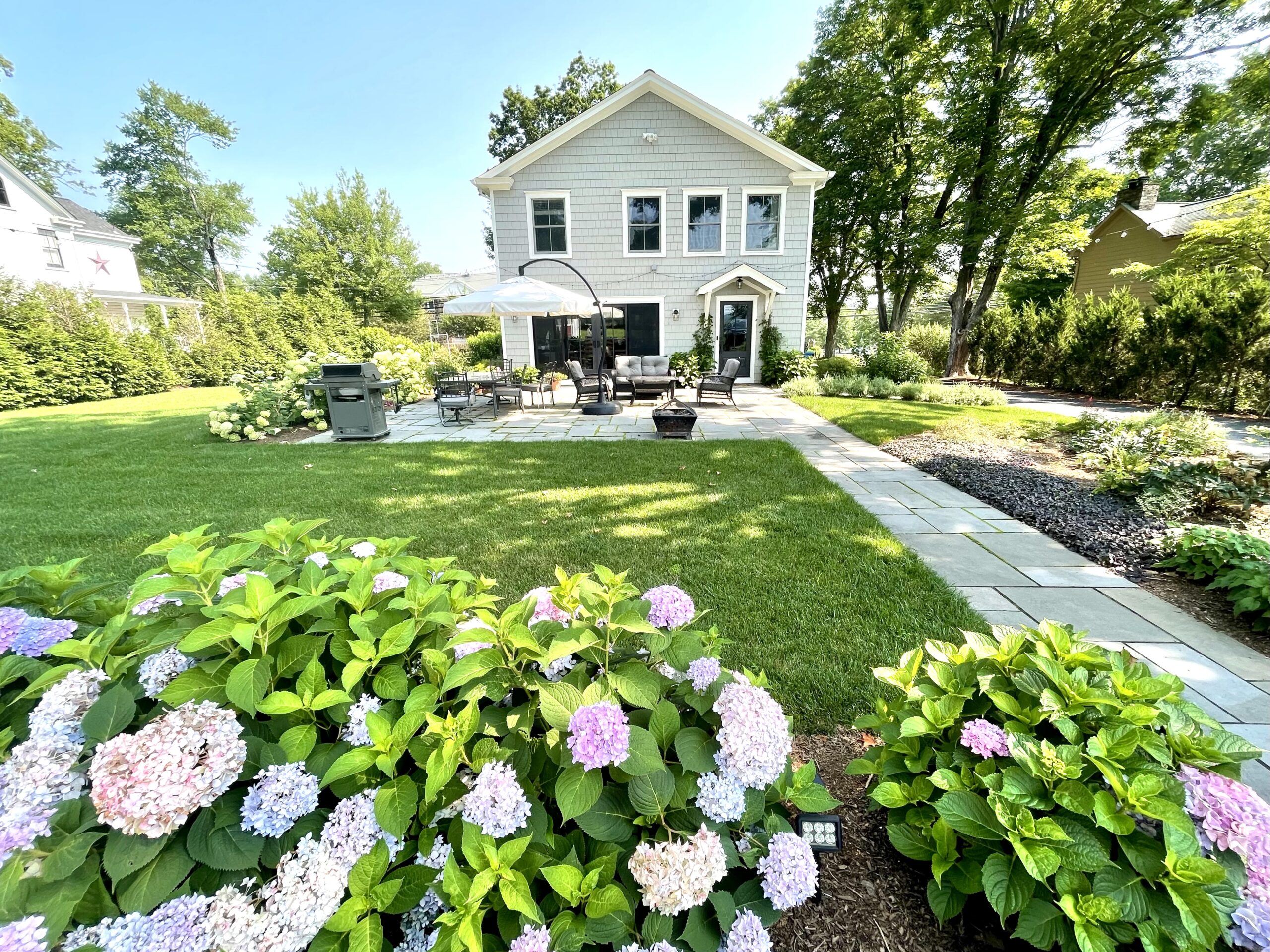
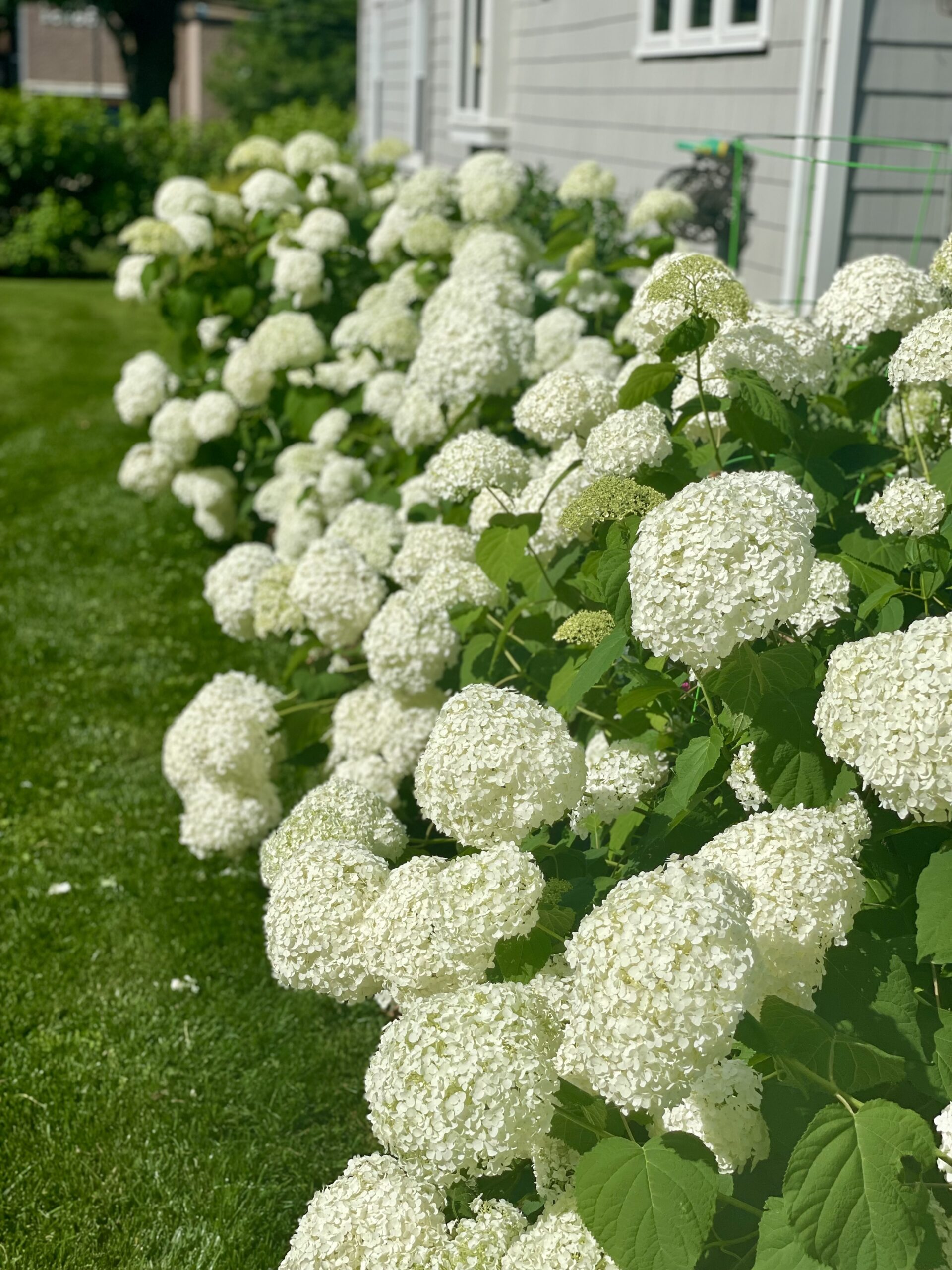
–
Enjoy the blooms!
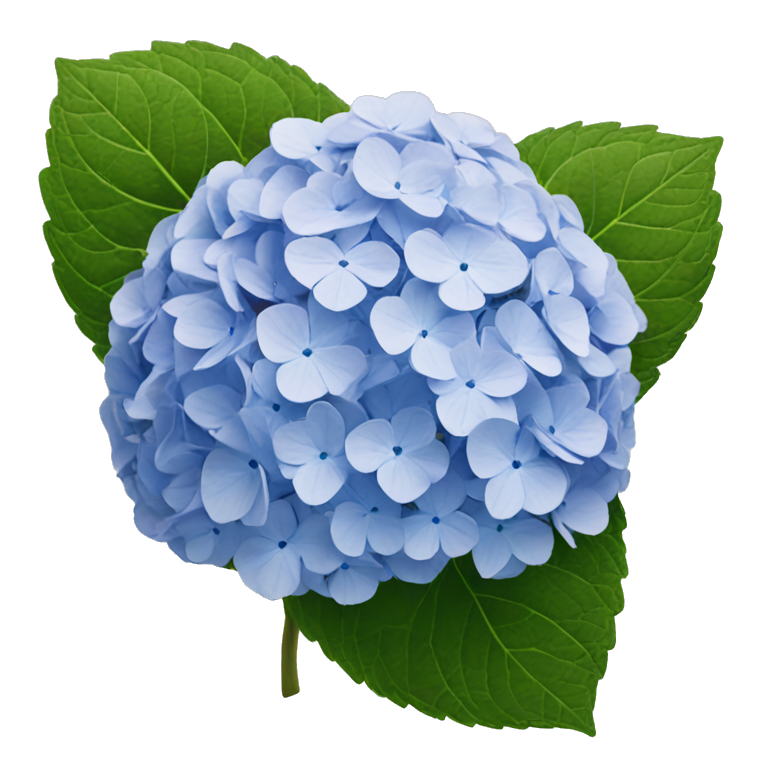
Links
Aluminum Sulfate for turning mopheads blue
Annabelle Incredi-Ball Hydrangeas
Never Miss a Post
Updates, stories, perks & tips. No spam. Only love.
Get on the List
✨4 near death experiences✨3 million followers: Psychic medium Amie Balesky knows a thing or two about what happens when we die. Not only has she channeled thousands of loved ones in spirit, she’s had FOUR NDEs.
✨ Gather ’round kindred spirits… ✨ It’s Adam Berry! Our team has watched every single episode of #kindredspirits, and read or listened to Adam’s book #goodbyehello. We’re still in a fan girl haze.
Calling all Darklings! ✨The one…The only…Dave Schrader! In this episode…✨Real talk about trauma and the paranormal ✨What you didn’t see on Dave’s TV shows ✨Time slips and other head-exploding theories.
When we moved into the 1835 farmhouse, AKA The Manse, there was a lot of work to do.
Not long after we moved in, we began a small construction project, opening up a wall that divided a bedroom. One day I was taking progress photos and caught this in the closet space…
trending
about the blogger
Producer, director, Mama, wife, old house freak, hydrangea hoarder, fan of all things paranormal... All of it supported by the bones of creativity and curiosity. Thank you for being here.
Hey there, Sara here...
learn more
©2025 Emotional Pictures Corporation • All Rights Reserved • Privacy Policy • terms & conditions



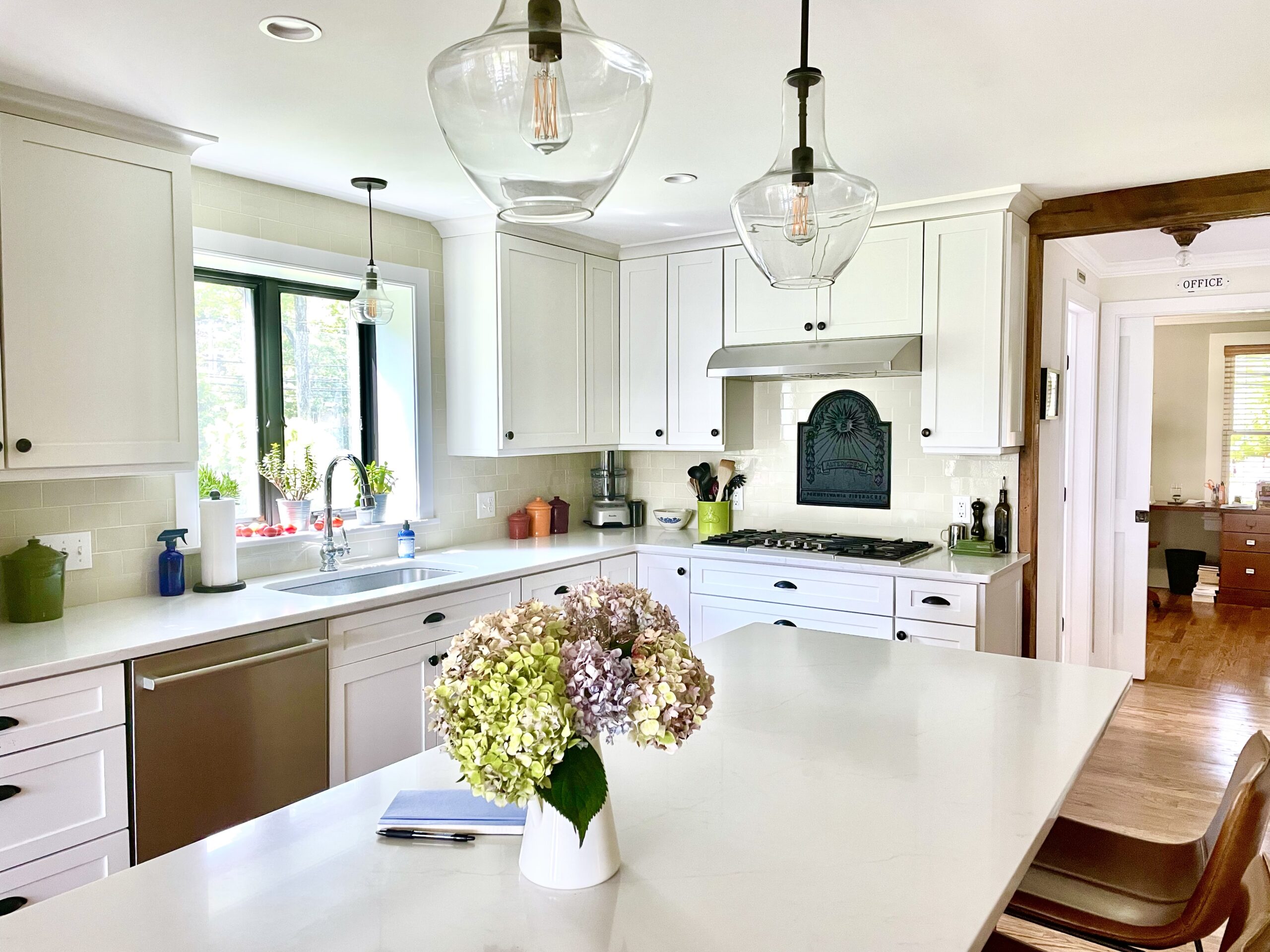

Add a Comment +